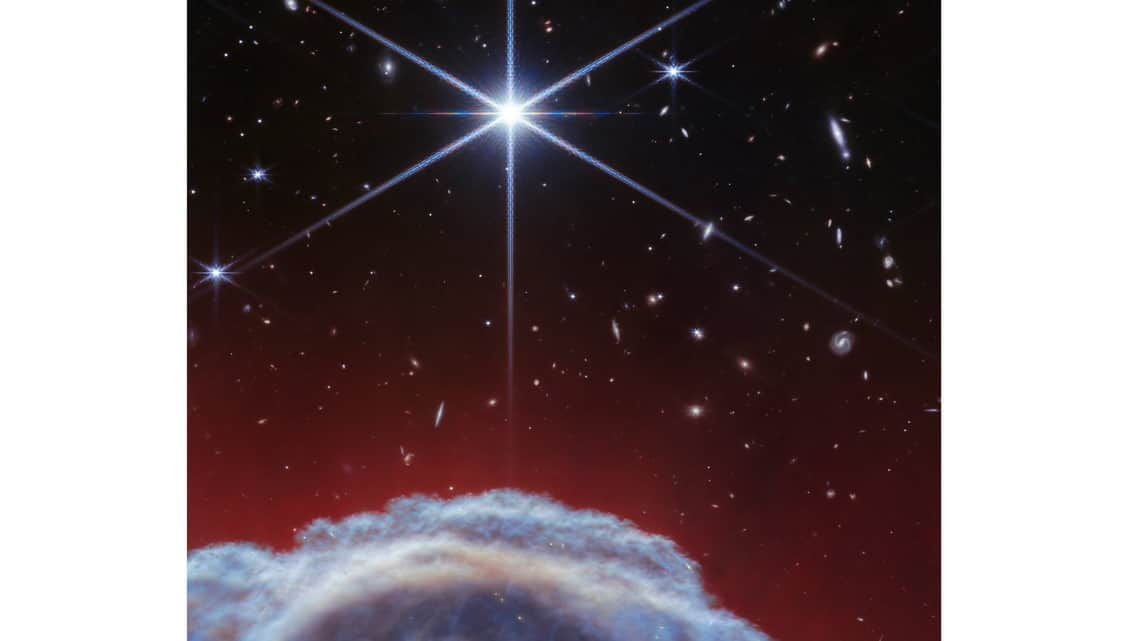The James Webb Space Telescope has taken the sharpest infrared images to date of the top portion of the Horsehead Nebula located in the constellation Orion
The James Webb Space Telescope has added yet another glowing gem to its collection of cosmic images.
US space agency Nasa said on 29 April that the James Webb Space Telescope has captured the sharpest infrared images to date of a zoomed-in portion of one of the most distinctive objects in our skies, the Horsehead Nebula — a small dark nebula in the constellation Orion. According to Nasa, these observations show the top of the “horse’s mane” or edge of this iconic nebula in a whole new light, capturing the region’s complexity with unprecedented spatial resolution.
Also read: Researchers find second-most distant galaxy using James Webb telescope
Webb’s new images show part of the sky in the constellation Orion (The Hunter), in the western side of a dense region known as the Orion B molecular cloud. Rising from turbulent waves of dust and gas is the Horsehead Nebula, otherwise known as Barnard 33, which resides roughly 1,300 light-years away, the space agency said in a statement.
Nasa explains the nebula formed from a collapsing interstellar cloud of material, and glows because it is illuminated by a nearby hot star. “The gas clouds surrounding the Horsehead have already dissipated, but the jutting pillar is made of thick clumps of material and therefore is harder to erode. Astronomers estimate that the Horsehead has about five million years left before it too disintegrates. Webb’s new view focuses on the illuminated edge of the top of the nebula’s distinctive dust and gas structure,” the statement explains.
The Horsehead Nebula – discovered by Scottish astronomer Williamina Fleming in 1888 – is a well-known photodissociation region, or PDR. In such a region, ultraviolet (or UV) light from young, massive stars creates a mostly neutral, warm area of gas and dust between the fully ionized gas surrounding the massive stars and the clouds in which they are born, the Nasa statement explains. It further adds: “This UV radiation strongly influences the chemistry of these regions and acts as a significant source of heat.”
Nasa says in its statement that astronomers next intend to study the spectroscopic data that has been obtained from these new images to gain insights into the evolution of the physical and chemical properties of the material observed across the nebula.
Launched in December 2021, the James Webb Space Telescope is the world’s premier space science observatory – deemed by many as a successor to the Hubble Space Telescope. Webb is an international program led by Nasa with the ESA (European Space Agency) and the Canadian Space Agency.
Also read: Week in tech: James Webb Space Telescope spots ‘galactic teenagers’
Source Homevior.in





I’m really impressed together with your writing skills as well as with the format for your blog. Is this a paid topic or did you modify it yourself? Anyway stay up the nice quality writing, it’s uncommon to see a nice weblog like this one today!